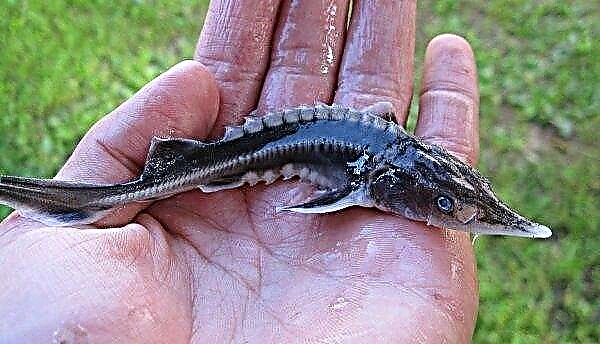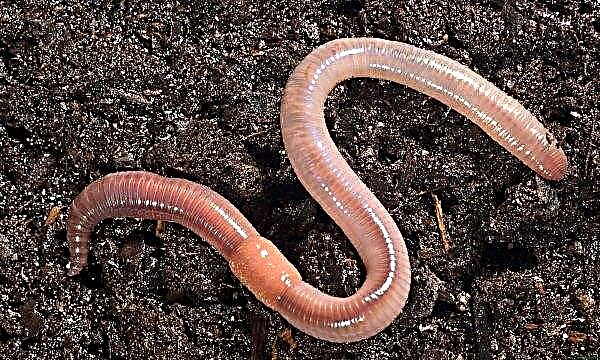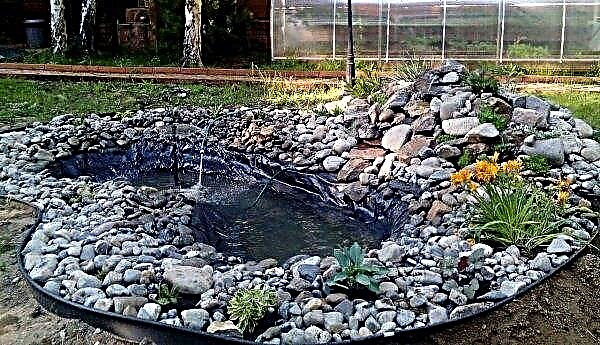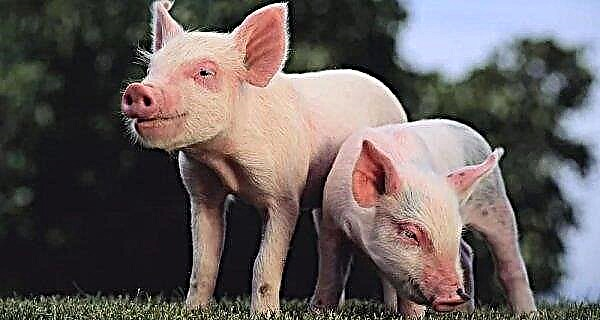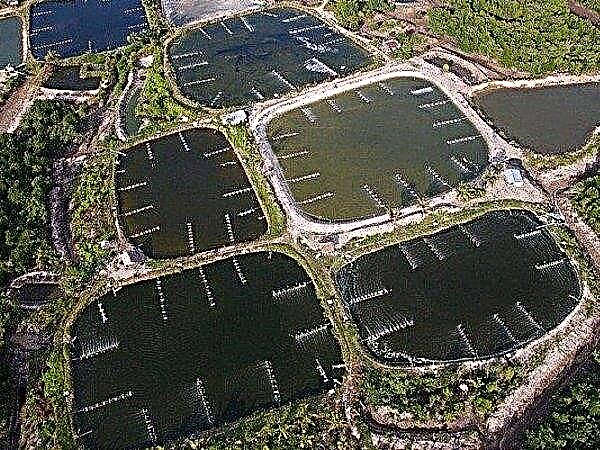Incubation of farm poultry eggs at home is an effective way to quickly increase the number of birds, however, only if all actions are performed correctly, in compliance with all norms and requirements. When you can go to the bookmark, and what you should know about this process, you will learn from this article.
How to select eggs for a bookmark
The selection of eggs for laying in the incubator is the first and one of the most important stages in the whole process. If there are a lot of birds, then product collection can be carried out every 3-4 hours, starting from the early morning until the very evening. At the same time, it is impossible to prevent overcooling of previously deposited specimens, it is better to leave them at room temperature until enough amount is added for laying. It is good if they are even and smooth eggs of medium size (for example, when breeding chickens, specimens weighing 65 g are considered most suitable).
Important! The choice of eggs and the further process of incubation of chicken, goose, duck, turkey or quail eggs always have differences, therefore, when choosing, it is worth focusing on the average production indicators from each species of bird, choosing the appropriate trays for the incubator.
The following specimens are not suitable for breeding chicks:
- eggs with cracks, growths, uncharacteristic patterns or other defects on the surface of the shell;
- specimens with a displaced air chamber or its increased size (for chicken - more than 2 mm);
- specimens with a freely moving yolk that swims from one part of the space to another (this indicates the presence of a torn supply cord).
A special device, an ovoscope, can be used to examine selected eggs for the presence of any defects, with which you can enlighten each of them and track the correct formation of the embryo during further incubation.
When is it better to lay
The timing of laying eggs of poultry in many respects depends on its variety, but almost all breeders advise doing this in the spring, so that over the summer hatched young animals grow stronger and grow. Before placing the selected specimens in the incubator for 24 hours they are kept in room conditions (+ 23 ... + 25 ° C) so that the temperature from the inside and outside of the shell becomes approximately the same. After this, be sure to check the performance of the prepared incubator, set it to the desired temperature and activate the ventilation systems.
Smaller specimens are recommended to be placed in trays closer to sunset, and products from large birds - in the morning. 4 hours after the first laying, medium eggs can be placed in the incubator, which will help to achieve a uniform output of young animals.
Did you know? Artificial incubation originates from the days of the ancient Egyptian civilization, about 1.5 thousand years BC. e. In those days, only selected priests were dedicated to the “secrets of the universe,” therefore, furnace incubators were built at specialized religious complexes and provided for the simultaneous laying of tens of thousands of eggs.
Features of the preparation of eggs
After selecting the egg products and preparing the incubator, the time comes for a final inspection and disinfection of the selected eggs. For this, the shell of each instance is wiped with a sponge moistened in potassium permanganate or a solution of bleach (30%) is used. Both options contribute to the effective elimination of pathogens without causing any harm to the internal contents.
After liquid treatment, all prepared specimens are left in the room until the entire surface is completely dry. Only after that it will be possible to put them in the incubator trays.

How to lay eggs in an incubator at home
Features of the incubation bookmark largely depend on the species of bird from which the products were taken, because even the direction of masonry is important for healthy offspring. Let's find out what you should know about this process when working with chicken, goose, duck, turkey and rarer - quail eggs.
Chicken
Chicken eggs do not differ in large sizes, therefore, if there is sufficient space on the trays, they can be placed both vertically and horizontally. To save space or incubate larger specimens, it is more reasonable to place them with the sharp end down or tilt them slightly to the side. The best results are obtained by horizontal laying while maintaining sufficient space between adjacent eggs, however, if we are talking about devices with an automatic flipping system, then it is worth placing products with a blunt end up.
When breeding chickens, it is advisable to bookmark in the evening hours, so that well-developed young growth begins to hatch in the morning. In this case, the last chicks will appear by the evening of the same day and you can transfer them to a separate room. Tracking the process during the day is much easier than in the evening hours. All egg laying operations should be carried out as quickly as possible, so the water for the pallet should be heated in advance (its temperature should be in the range + 40 ... + 45 ° C).Did you know? The first prototypes of modern incubators appeared in the 19th century in Europe and America, and in Russia such units began to be produced only in 1928. Until the 40s of the last century, enterprises used only huge incubators, which simultaneously housed 16-24 thousand eggs.
Video: Preparation and laying of eggs in the Blitz 48 incubator
Goose
When laying large goose eggs (at least 10 cm in length and 5 cm in width) they are placed vertically, thereby providing ease of rotation during the incubation process. In order not to get confused during the flips, you can make small letter marks in different places of the shell with a marker, and then write down on the sheet which letter was put on top for the last time. For optimal development of the embryo in devices without an automatic flip system, you will have to perform this task at least 10 times a day, maintaining the optimum room temperature (not lower than + 37 ° C).
Typically, the incubation period of goose eggs lasts about a month and during this time you will have to inspect the clutch several times and even cool it daily (starting from the fifth day after being placed in the incubator). True, only slight temperature drops are allowed, no more than 2-3 degrees from the recommended values at each stage of development.Video: Preparing and laying goose eggs in an incubator
Duck
As with previous egg varieties, large specimens are sent first to the incubator, followed by medium and small specimens at intervals of 4 hours. The direction of the masonry should be horizontal, because in this position the hatchability of duck young is much better. If the incubator does not have an automatic rotation function, you will have to put letter marks on the shell (from different sides) and turn the future ducklings manually, at least 6 times a day.
Important! To improve the metabolic processes inside the eggs, they can be sprayed with water from a spray gun, the main thing is that the temperature of the liquid is not lower than + 27 ° C.
Quail
The small size of the quail eggs is their main difference from all of the above varieties, so none of the methods described above for placing in large standard incubator trays are suitable here. For such products, special nets are used, allowing you to place it in a checkerboard pattern, and always with a sharp end down. In extreme cases, trays for eggs can come up, only you have to put them in two rows.
Otherwise, preparatory measures (selection and processing with a solution of potassium permanganate), as well as further care for quail eggs placed in the incubator, are based on the same principles as in other cases.
Video: Incubation of quail eggs
Turkey
Egg products from turkeys are slightly larger than standard duck, but at the same time, the nuances of preparing and bookmarking both options have many common points. So, all of them should be disinfected and stacked on the tray in a horizontal position, with further maintenance of optimal temperature indicators, air humidity and regular turning over (this time at least three times a day). Starting on the sixteenth day, you can begin to irrigate the eggs (only with warm water), with a further half-hour cooling.
Incubation stages
Regardless of the type of poultry grown, during the incubation of selected eggs, almost all embryos (except quail) will go through 4 main stages of their development, and the difference is only in their duration. Of course, each stage has its own requirements for the level of humidity and temperature inside the incubator, so we suggest that you consider each possible option more closely.
Stages of incubation of chicken eggs:
- The first week after the bookmark (1-7 days)- the beginning of the formation of the embryo. During this period, the previously established modes should not be changed, but it is advisable to turn the eggs over as often as possible, but after an equal period of time (for example, after 2-3 hours). At the end of the first week of incubation under the ovoscope, the developed circulatory system of the future chick and the germplasm surrounding it are already clearly visible. The chicken itself is not yet visible.
- 8-14 day - characterized by the further formation of the embryo: for example, the embryonic respiratory organ, located closer to the sharp edge, should close, which is also noticeable during ovoscopy.
- 15-18 day incubations - in addition to regular egg turning, you can begin to air them 1-2 times a day, temporarily lowering and again raising the temperature inside the device. At this stage, when viewing the shell with an ovoscope, you will probably see that the entire inner space is already occupied by the chicken, and the only hollow place is the air chamber (should occupy at least 30% of the total volume). Sometimes it is in the third stage that the squeak of the future chicken is first heard.
- 19-21 days- the time of occurrence of the formed chicks. They are already completely ready to leave the shell, still using the remnants of the protein and trying to peck the shell.
Important! Immediately before hatching, the state of the young can be determined by the nature of its squeak: normally it should be a calm and monotonous sound, without the slightest sign of panic (loud noises indicate that the chicken is cold).
The incubation stages of duck and goose eggs are somewhat different, but only by the length of the total developmental period of the embryo.
For duck eggs, the steps are as follows:
- 1-7 day - the duckling’s organs are laid, the heart begins to beat and breathing quickens;
- 8-17 days - the formation of the skeletal system, the further development of all organs;
- 18-25 day - filling the embryo of almost the entire internal space, with the exception of the air chamber;
- 26–28 day - preparation for the birth, peeling of the shell.
Goose eggs go through all the same stages, only the appearance of offspring occurs on day 28-30, due to which the duration of the previous three stages is slightly shifted: the second lasts from 8 to 14 days, and the third from 15 to 27.
In any case, all this time it is worth supporting the conditions acceptable for future chicks, which are given in the following table:

Small quails appear faster than other feathered relatives, therefore there are only three stages of embryo development:
- 1-7 day - the laying of the main organs and systems of the chick takes place (for its full formation of the egg, you need to turn it at least 4 times a day);
- 8-14 day - the capillary network is clearly visible, which normally will occupy up to ¼ of the total free space (if the vascular system is invisible during this period, then the embryo is not viable);
- 15-17 days - the embryo occupies the entire internal space and moves well, preparing to leave the shell.
Incubation of turkey products may last longer than a month, but in general it follows the same scenario as in the case of laying ordinary duck eggs. The only difference is the duration of these stages.
How to check eggs in an incubator for an embryo
When choosing the best specimens for laying in the incubator, each poultry breeder takes into account the external characteristic signs of their viability: shape, size, surface structure. An ovoscope, which is also used to further monitor the condition of the eggs and the development of the chick, helps to check the presence of an embryo under the shell.
In total, during the incubation period, no more than two such checks are carried out, with an interval of 1-2 weeks. For the first time (after the sixth day the eggs are in the incubator), the main task is to determine the presence of blood vessels that penetrate the protein, and the dark spot of the embryo. Repeated ovoscopy can be performed a week before the estimated date of hatching of the chicks, which will help to verify their normal activity and track movements.
Important! When illuminating the shell with an ovoscope, try to perform all the actions as quickly as possible so as not to overcool the sample taken from the incubator.
No matter how many eggs are laid in the incubator, you do not have to shine through them all. It is enough to select several pieces from different places of the incubator, especially if the bookmark has more than 100 copies (for example, Blitz incubators for 120 eggs are popular for poultry farming, although there are units designed for a smaller number: 48 or 72 pcs.) .
How to check the health of hatched young
If all hatching eggs are properly taken at the specified time, wet chicks should appear from them.
You can assess their condition in the first 10 minutes of life, focusing on the following indicators of a healthy individual:
- the stomach should be tight;
- umbilical cord - soft;
- legs are strong and powerful;
- fluff - shiny (after it dries).
Young animals that have appeared should be left in the incubator for a while, at least until the chicks are completely dry and adapt to new conditions. After that, you can evaluate additional indicators of their good health: active behavior, reaction to sound, a slight bulge of the eyes and clarity of vision. After a few more hours, healthy individuals are transferred to a brooder (can be replaced with an ordinary box) and standard care is started, based on maintaining a sufficient temperature (in the first few days you can heat the chicks with a lamp, turning it on from 6 a.m. and turning it off at 9 pm), regular feeding (up to 5 times a day using semolina, millet and egg yolk) and evaporated with boiled water or infusions of herbs.
After a few more hours, healthy individuals are transferred to a brooder (can be replaced with an ordinary box) and standard care is started, based on maintaining a sufficient temperature (in the first few days you can heat the chicks with a lamp, turning it on from 6 a.m. and turning it off at 9 pm), regular feeding (up to 5 times a day using semolina, millet and egg yolk) and evaporated with boiled water or infusions of herbs.


